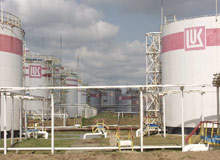
Located close to Port of Odessa, Ukraine, the Odessa refinery is operated by OAO Lukoil. The refinery receives crude oil from a pipeline in Russia and refines Urals crude, a blend of Russian export. Its processing capacity was 2.8 million tons per year in 2008. The nelson index was 3.2 in 2008 and increased to 3.9 in 2009, indicating a higher cost of refinery.
The operation and production of petroleum products at the refinery were stopped in October 2009, as deliveries were disturbed by state oil transport operator Ukrtransnafta due to lack of crude oil supplies.
The operator temporarily discontinued the pumping of crude oil via Lisichansk, Kremenchug and the Odessa refinery. Ukrtransnafta suggested other routes but these would affect its profitability due to the high transportation costs involved.
Later, oil transportation company OAO AK Transneft came up with a technical solution for facilitating the restart of oil supplies through the Druzhba pipeline via the route Belarussian border-Brody-Odessa from early November 2009.
The pipeline will facilitate the refinery to receive 195,000t of oil and restart the production of petroleum products.
Lukoil took over a 51.9% stake in the Odessa refinery through its subsidiary Lukoil Sintez Oil in 1999. At that time, the refinery had total throughput of 3.9 million tons, specialised in the production of motor gasoline, diesel fuel, fuel oil, oil bitumen and liquefied gas.
An investment program was planned in 1999 for higher refining depth.
The refinery has a hydro treatment unit and visbreaking unit. The petroleum products from the refinery are shipped by rail and road transport. They are also transported via a pipeline to Odessa port and further loaded for export.
Odessa refinery reconstruction
Major reconstruction and modernisation works at the refinery started in 2005. The plant’s operation and production stopped during reconstruction. The first phase of modernisation, along with reconstruction of distillation facilities and other equipment and premises, was completed in 2007.
In early 2008, the second stage of modernisation ended with the installation of a visbreaking unit. The refinery resumed operations in April 2008.
During the three-year upgradation process, one of the vacuum distillation units was re-established with an increased annual capacity from 2.4 to 2.8 million tons. The other distillation unit was discontinued.
In addition, the atmospheric unit was reconstructed for visbreaking. The process of visbreaking results in lower volumes of fuel oil and much higher volumes of vacuum gasoil. It will increase the depth of refining from 56% to 78%.
Hydro-treatment complex and other facilities were also modernised by April 2008. The upgradation enabled the company to produce motor gasoline as per Euro-3 standards and diesel fuel, jet fuel, bitumen and liquefied gas to Euro-4 standards.
The recent modernisation included the construction of an energy-generating unit with a capacity of 18MW in 2009.
Odessa refinery processing
The refinery converts crude oil into fuels through a visbreaking conversion process. The conversion rate recorded in 2009 was 12,300 barrels per day. The process is non-catalytic and thermally cracks the large hydrocarbon molecules in oil. The conversion unit was commissioned in first half of 2008.
Odessa oil refinery history
The refinery started operating in 1937. It processed around two million tons of oil in 1998 and became part of Lukoil in 2000. The refining complex of Lukoil comprises four Russian refineries and three foreign refineries, including the Odessa refinery. The production of vacuum gas oil and oil bitumen from the refinery started in 2001.
Further, in 2004, an isomerisation unit with a capacity of 120,000t was introduced for increasing the annual production of high-octane gasolines.
The catalytic reforming unit and a trestle for the lading of light petroleum products into tank wagons were redeveloped and capacity was increased by 200,000t. During the same year, desalting and distillation facilities were also rebuilt.
The quality of products has improved since 2004, as shown by increased share of high-octane gasoline over 80% in the total volume of motor gasoline.



